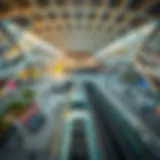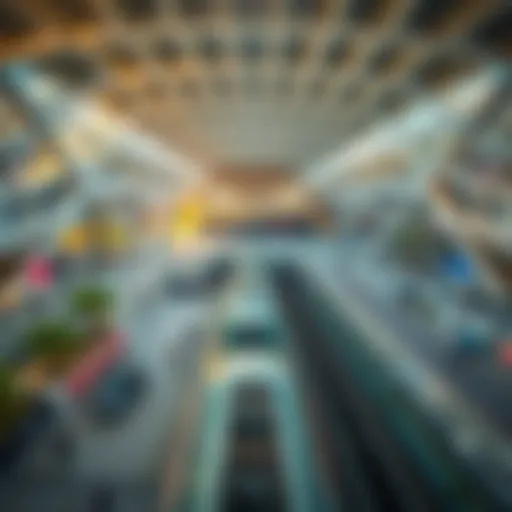Exploring Dubai's Urban Landscape and Architecture
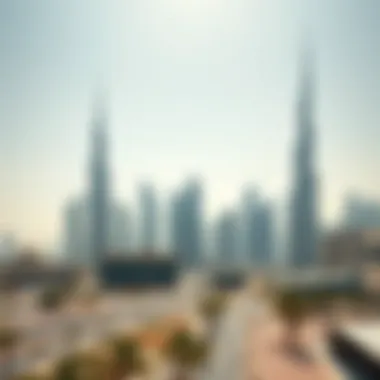

Intro
Dubai stands out in the global panorama of cities, not just for its breathtaking skyscrapers but for the intricate layers of its urban fabric. In this ever-evolving metropolis, where tradition dances alongside modernity, the environment is not merely a backdrop but a protagonist in the city's narrative.
The journey through Dubai's urban landscapes reveals more than just architectural wonders. It invites us to delve into a mosaic of cultures, practices, and a dynamic real estate market that influences both residents and investors. With every turn, one can appreciate how the city’s strategic planning and economic ambitions shape the experiences of its inhabitants.
As we traverse through the majestic skyline, from the iconic Burj Khalifa to the sprawling Palm Jumeirah, we uncover the socioeconomic dialogues that these structures articulate. This piece aims to illuminate the pathways of Dubai’s architectural journey, the flourishing neighborhoods reflecting its diverse population, and the unique investment climate that beckons both seasoned and new investors.
The essence of Dubai’s cityscape lies in the layers of its complexity— the tension between past and present, local and global, public and private spaces. Let’s embark on this exploration to discover how these elements coalesce to define a city that stands as a beacon of innovation and opportunity.
Understanding Cityscapes
Cityscapes form the very fabric of urban life, shaping not just the skyline but also the experiences of those who inhabit them. In the context of Dubai, this is particularly critical. The city’s rapid transformation over the last few decades has created an alluring tapestry of architecture and urban design. Understanding cityscapes encompasses more than just recognizing buildings; it involves grasping how they affect social interactions, economic opportunities, and cultural expression.
The importance of delving into cityscapes cannot be overstated. It allows investors, homeowners, expatriates, agents, and developers to appreciate the nuanced elements that contribute to property values and community dynamics. It’s not merely about where a structure stands; it’s about its relationship to the surroundings, both physically and socially. Cityscapes tell stories of aspiration, innovation, and the convergence of diverse cultures.
Additionally, comprehending cityscapes provides insight into sustainability and urban planning, which are increasingly crucial in a rapidly changing world. Dubai, for instance, stands as a beacon of modern urban development, yet also faces unique challenges from environmental pressures to the need for inclusive spaces. By examining these elements, stakeholders can make informed decisions that positively influence the urban essence of the city.
"A city’s skyline is not just an arrangement of buildings; it reflects its soul, economics, and the collective dreams of its inhabitants."
As we explore the dual aspects of defining cityscapes and the significant role of architecture, we uncover layers of meaning and functionality that not only define Dubai's environment but can also guide future developments. It all starts with a clear definition.
Defining Cityscapes
Cityscapes can be defined as the visual and functional representation of urban areas characterized by their architecture, streets, and open spaces. This concept captures not just the physical aspects of a city but also its vibrancy and cultural dynamics. In Dubai, where distinct architectural styles emerge against a backdrop of traditional influences and modern innovation, defining cityscapes reveals the essence of what it means to live and work in such an environment.
Cityscapes are comprised of:
- Architectural Features: Not just the buildings themselves, but how they interact with one another. For example, the juxtaposition of retro markets with towering skyscrapers.
- Public Spaces: Parks, plazas, and waterfronts that encourage community interaction and leisure.
- Transportation Networks: Streets, sidewalks, and transit systems that facilitate mobility and connect different city areas.
- Cultural Landmarks: Iconic locations that represent the heritage and history of the city, like the historic Al Fahidi District and modern attractions such as the Dubai Mall.
The Role of Architecture
Architecture serves as the backbone of cityscapes, functioning as both an art form and a practical necessity. The way buildings are conceived not only defines the aesthetic but also impacts how the community interacts within that space. In Dubai, notable for its innovative designs, architecture plays a pivotal role in shaping identity and fostering connections among residents and visitors alike.
Key aspects of architecture’s role in cityscapes include:
- Cultural Expression: Each building can tell its story. The design elements in the Burj Al Arab reflect Arabian traditions fused with modern luxury.
- Economic Functionality: Well-planned architecture can drive economic activities. Commercial areas designed for foot traffic often witness greater business success.
- Social Interaction: Open spaces integrated within architectural layouts encourage socialization and community gatherings, essential for urban life.
- Sustainability: Increasingly, architectural designs consider ecological footprints and smart technologies, aligning with the broader goals of sustainability in urban planning.
In summary, grasping the significance of architecture gives insights into the architectural diversity and identity of Dubai’s urban landscape. As we proceed to explore Dubai's unique architectural landscape, it becomes clear how these elements knit together to form a compelling narrative of progress and community.
Dubai's Architectural Landscape
The architectural landscape of Dubai serves as a vivid testimony to the city’s rapid development and ambitious vision. This section takes a closer look at key elements contributing to the overall essence of Dubai's cityscape. With its striking silhouettes and innovative designs, the architecture not only defines the city’s skyline but also reflects its socio-economic climate and cultural thrills. Observing these structures provides crucial insight into Dubai's aspirations of being a global hub for business, tourism, and lifestyle.
Iconic Structures
Burj Khalifa
Burj Khalifa stands as an emblem of Dubai's determination and ambition, holding the title of the tallest building in the world. At a staggering height of approximately 828 meters, it offers a perspective of what human ingenuity can achieve. The key characteristic that sets Burj Khalifa apart, besides its tremendous height, is its intricate design, which draws influence from traditional Islamic architecture while blending modern technology.
"Burj Khalifa is not just a building; it’s a symbol of dreams reaching new heights."
Its observation deck on the 148th floor captures breathtaking views of the city, allowing visitors to feel the pulse of urban life far below. However, for investors, it's also a magnet for tourism, boosting local businesses and providing a ripple effect throughout the broader economy of Dubai. Yet, one must note the challenge of maintaining such an iconic structure, from upkeep to safety concerns.
Burj Al Arab
Next comes the Burj Al Arab, often dubbed the most luxurious hotel globally. Shaped like a sail, this architectural masterpiece symbolizes Dubai’s wealth and opulence. Its central characteristic lies in its exclusive design and extravagant amenities, such as a helipad and underwater restaurant, that cater to a select clientele.
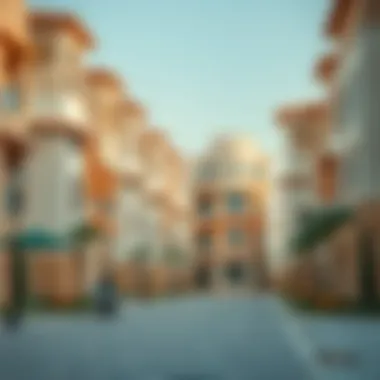

Many tourists flock to this site to experience the luxury it promises, adding a significant draw to Dubai’s tourism sector. But this comes with its pitfalls; the extravagant nature may not resonate with every visitor or investor looking for more practical aspirations. The unique feature of Burj Al Arab is how it redefines hospitality within an architectural context, painting a picture of what luxury should be in a city that thrives on first impressions.
Dubai Frame
Another noteworthy structure is the Dubai Frame, a compelling blend of art and architecture that provides a metaphorical window into the past and future of the city. Standing at 150 meters, it showcases panoramic views of both the old Dubai and the burgeoning new city. This juxtaposition is its defining element, reflecting Dubai's rich history and its rapid development.
Its unique feature is that the Frame offers an exhibition area, discussing Dubai's transformation over the decades. This serves not only as a tourist attraction but also as an educational hub, fostering a sense of community awareness about Dubai’s journey. The investment in such a project benefits not just tourism, but also enriches the cultural narratives that shape the urban identity.
Architectural Diversity
Dubai's architectural diversity represents a tapestry woven with distinct threads of cultures, traditions, and modernity. Each building tells a story, revealing unique influences that shape the aesthetics of the city. From the intricate details of heritage sites to the sleek designs of contemporary skyscrapers, this diversity adds vibrancy and depth to the urban landscape.
Combining various styles ensures that Dubai does not just rely on a single narrative but embraces multiple dimensions of expression, benefitting investors looking for varied developments and homeowners in search of distinct neighborhoods.
Socio-Economic Influences on Cityscapes
The urban landscape of any city cannot be disconnected from its socio-economic context. In Dubai, the essence of cityscapes is intricately linked to economic vitality, investment trends, and cultural narratives. As a global hub for trade and tourism, Dubai’s cityscape reflects the diverse socio-economic layers that fuel its growth and expansion. The interplay between architecture and economic conditions showcases how investments shape skylines and community wellbeing. As we navigate through this topic, we will shed light on the significant elements that define socio-economic influences, examining both benefits and considerations, particularly focusing on the implications for investors and residents.
Impact of Investment Trends
When it comes to Dubai, investment trends are like the beat of a drum—determining the rhythm of urban growth. With an array of high-profile projects popping up across the city, the impact of capital infusions is profound. The Emirate attracts significant foreign direct investment, which not only enhances the architectural landscape but also boosts employment and real estate sectors.
- Market Dynamics: Investors often react to market dynamics that directly influence property values and rental rates. For instance, a surge in tourism correlates with increased demand for short-term rentals, enhancing returns for property owners. The ever-changing trends in investment provide a roadmap for future developments, making it crucial for stakeholders to stay ahead of the curve.
- Infrastructure Development: Infusion of funds leads to key infrastructure projects, which in turn bolster connectivity across the city. These developments can uplift entire districts, transforming them from residential blocks to commercial hubs. Notably, initiatives like the Dubai Metro have catalyzed surrounding property values, making them prime targets for investors.
In essence, understanding and adapting to these investment trends is paramount for anyone looking to make their mark in Dubai's bustling real estate market.
Cultural Integration in Design
In a city as vibrant as Dubai, the fusion of culture and design is at the core of its identity. Local traditions intertwine with modern aesthetics, resulting in a unique architectural narrative that is both captivating and functional.
- Preserving Heritage: Architects and designers are increasingly integrating elements that reflect Emirati heritage, balancing modernity with historical significance. For example, structures like the Al Fahidi Historical Neighborhood showcase traditional wind-tower architecture, serving as a reminder of the past while paving the way for future innovations.
- Global Aesthetic: At the same time, Dubai embraces global architectural styles, resulting in skyscrapers with audacious designs that challenge conventional frameworks. The Burj Khalifa, for instance, stands as a testament to innovative engineering while being a symbol of modern UAE.
- Community Spaces: Culturally integrated design goes beyond monuments and skyscrapers. Green spaces, public art, and community-centric developments create a sense of belonging and appreciation among residents, fostering social cohesion.
Ultimately, cultural integration in design enriches the urban experience, providing a sense of place that unites residents and visitors alike. As Dubai continues to evolve, the influence of socio-economic factors will remain pivotal in shaping its future narratives.
The essence of any city lies not just within its buildings, but in the stories and communities that thrive within them.
For further insights, consider resources like Wikipedia, Britannica, and discussions on Reddit for viewpoints from locals and expatriates.
Urban Planning and Development
Urban planning and development play a pivotal role in shaping the ever-evolving cityscape of Dubai. As an entity that embodies a bustling blend of tradition and modernity, effective planning becomes indispensable in addressing the city’s growing needs. Such strategic planning ensures not only the efficient use of land but also the integration of sustainable practices, fostering a vibrant community that supports both its residents and investors.
In Dubai, the landscape is not just about breathtaking skyscrapers but also about creating functional spaces that enhance the quality of life. Proper urban planning takes into consideration various elements including transportation, public spaces, and residential areas. Each aspect is interlinked, aiming to create a seamless urban experience that caters to diverse demographics. This balanced approach aids in realizing the city’s ambitious vision of global connectivity and innovation.
Sustainable Practices
Sustainability in urban planning is not merely a buzzword in Dubai; it is a fundamental principle guiding development. With the desert environment presenting unique challenges, the city has pursued a green narrative, embedding sustainability into its infrastructure. For instance, initiatives such as the Dubai Clean Energy Strategy 2050 aim to make the city a beacon of clean energy and innovation.
- Smart water management: Techniques such as rainwater harvesting and water recycling are becoming more commonplace. This not only conserves precious resources but also supports a growing population.
- Green building standards: Ensuring that new skyscrapers use eco-friendly materials or implement energy-efficient technologies is crucial. The LEED (Leadership in Energy and Environmental Design) certification is a testament to Dubai's commitment in this area.
- Public transport expansion: Investments in electric public transport options, such as the Dubai Metro and future tram projects, indicate a move towards reducing carbon footprints.
These efforts not only reduce environmental impacts but also enhance the overall aesthetic of the city—making it not just a place to live, but a destination that inspires.
Preparation for Future Growth
Looking forward, Dubai is bracing itself for an influx of residents and tourists, necessitating thorough preparation for future growth. Urban planners are tasked with forecasting trends and subsequently adapting spaces to meet impending demands. This involves a three-fold strategy:
- Assessing demographic shifts: Understanding who is moving in and the needs of these different groups is vital. For instance, how many expatriates may settle, or what type of amenities will attract families?
- Innovative zoning laws: Revising zoning regulations to permit mixed-use developments encourages a vibrant lifestyle where workplaces, shops, and homes exist within a short distance, thereby enhancing community interaction.
- Technological integration: Embracing smart city innovations—such as IoT devices for traffic management and mobile apps for public services—can improve efficiency and communication between residents and city officials.
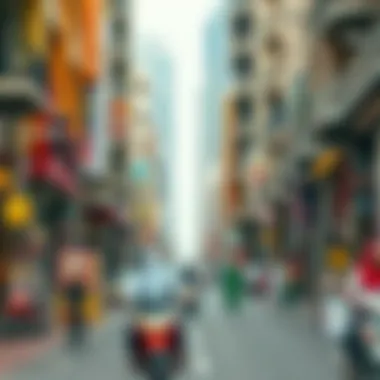

"The key to Dubai’s urban success lies in its readiness to redefine its growth trajectory through innovative solutions."
Neighborhood Dynamics
Neighborhood dynamics play a vital role in shaping the urban environment in Dubai. These dynamics reflect the complex interplay of factors that influence both residential and commercial areas as they evolve over time. This section delves into the importance of neighborhood dynamics, illustrating how they contribute to the overall essence of cityscapes in Dubai.
Importance of Neighborhood Dynamics
Understanding neighborhood dynamics is essential for investors, homeowners, expatriates, agents, and developers. These dynamics dictate property values, influence educational opportunities, and affect overall quality of life. Different neighborhoods often come with distinct characteristics that attract diverse demographics. For instance, some may be favored for their vibrant nightlife, while others might appeal to families seeking tranquility and community facilities. This diversity fosters a sense of belonging and helps to cultivate a unique identity for each neighborhood.
Trends in Residential Areas
Residential areas in Dubai are witnessing rapid transformations, shaped by various trends that cater to the evolving preferences of residents.
- Rise of Sustainable Living
Increasing awareness of environmental issues has prompted a demand for eco-friendly housing solutions. Neighborhoods, such as Dubai Marina and Jumeirah, increasingly reflect sustainable practices, featuring energy-efficient buildings and green spaces. - Luxury Apartments and Gated Communities
As more expatriates flock to Dubai for work, luxury living is on the rise. Neighborhoods like Downtown Dubai and the Palm Jumeirah are seeing an influx of high-end apartments and villas equipped with amenities that cater to an affluent lifestyle. - Mixed-Use Developments
The trend of mixed-use spaces, where residential, commercial, and recreational areas coexist, is gaining traction. This model allows for vibrant community interactions and convenient access to services, enhancing life quality. Areas such as the Dubai Design District (D3) exemplify this trend, combining residential spaces with cultural venues and retail.
Commercial Zones and Their Evolution
Dubai’s commercial zones demonstrate a fascinating evolution, reflecting broader economic trends and urban planning strategies.
- Growth of Business Hubs
Areas like Dubai Silicon Oasis and Dubai Internet City have emerged as technology and business hubs, attracting startups and established firms alike. These zones provide infrastructure that fosters innovation while catering to diverse enterprises. - Integration of Retail and Hospitality
The evolution towards combining retail with hospitality has redefined areas. Malls, such as The Dubai Mall, are not just shopping destinations but also entertainment and dining hubs, enhancing foot traffic and business viability in surrounding neighborhoods. - Cultural Districts
Commercial zones are incorporating cultural elements, intertwining business and art. Neighborhoods like Alserkal Avenue serve as examples where art galleries and creative spaces flourish alongside commercial entities, enriching the urban landscape.
The evolution of neighborhoods in Dubai not only reflects economic development but also builds community engagement and identity.
Real Estate Market Analysis
The real estate market in Dubai serves as a barometer for the city's economic pulse. Understanding this market is indispensable not just for investors but also for homeowners, expatriates, and real estate professionals alike. The dynamics of property values and trends reveal important layers about Dubai’s urban fabric, as they are influenced by cultural, economic, and infrastructural shifts. Moreover, trends in real estate affect various facets of city life, from where people choose to live to how businesses thrive. A comprehensive analysis of this market equips stakeholders with insights that can dictate their long-term decisions.
Property Values and Trends
When exploring property values in Dubai, one cannot overlook how they fluctuate with time. Recent years have shown a trend where previously high-flying prices have begun to stabilize after some market correction. A myriad of factors drives these changes, including population growth, economic diversification, and investment trends.
"Real estate is often seen as a reflection of a city’s overall health, capturing both its opportunities and challenges."
Some key elements influencing property values include:
- Supply and Demand: For hot spots like Downtown Dubai and Palm Jumeirah, demand often outweighs supply, pushing values upward. Conversely, areas undergoing significant development can see price reductions until those projects come to fruition.
- Government Policies: Initiatives such as the Golden Visa program have catalyzed foreign investment in real estate, leading to gradually rising values in certain sectors.
- Global Economic Factors: The ripple effects from global markets can influence buyer sentiment in the UAE. For instance, when oil prices fluctuate, they impact investor confidence, which in turn adjusts property values.
Overall, understanding these trends empowers stakeholders to make informed decisions.
Implications for Investors
For investors specifically, the real estate landscape in Dubai presents both opportunities and challenges. The potential for returns is significant; however, investors must navigate carefully through a labyrinth of complexities presented by market variability. The following aspects play a crucial role in understanding investment implications:
- Long-term Stability: Investors should consider the longevity of their investments. Areas with steady growth are worth more than those with quick flips. Studying long-term trends rather than short-term constructions is vital for a sustainable portfolio.
- Risk Assessment: With every investment comes risk. Understanding whether to invest in newly-developed properties or established neighborhoods can depend heavily on personal risk appetite and market analysis.
- Emerging Markets: While new developments may seem flashy, established areas like Jumeirah often present less risk due to consistent demand.
Investors must continuously educate themselves and stay updated on local regulations, economic shifts, and urban planning initiatives to foster successful ventures in this vibrant market.
Challenges Facing Urban Landscapes
Urban landscapes are not just mere backdrops; they are living, breathing entities that encounter various challenges on their journey toward enhancement and sustainability. Interested parties such as investors, homeowners, and developers need to pay close attention to these difficulties, for they significantly impact real estate, community living, and overall city functionality. It’s essential to grasp the intricacies involved in combating these challenges, which can often dictate the course of a city’s development plans and financial prospects.
Overpopulation Concerns
In cities like Dubai, overpopulation is a pressing issue. The rapid influx of expatriates and the steady growth of the local population has resulted in major infrastructural stress. Traffic jams, crowded public spaces, and stretched resources are everyday realities. The residents often find themselves grappling with the consequences of living in highly densely populated regions.
Urban planners are actively working on solutions, but the task is herculean. Addressing these overpopulation concerns means enhancing public transportation systems, developing more housing units, and ensuring that amenities keep pace with the growing population.
Key considerations include:


- Public Transit: An expanded and efficient public transport network can alleviate congestion. More bus routes and metro lines can distribute population pressures evenly across the city.
- Mixed-Use Developments: These can reduce travel time by placing workspaces, shopping centers, and residences in close proximity.
In essence, managing overpopulation isn't just about controlling numbers—it's about improving the overall quality of life.
Environmental Impact Assessments
Another crucial challenge urban landscapes face is the environmental impact of rapid development. As Dubai continues to grow, the landscape changes drastically, affecting the local ecosystems and biodiversity. Air quality, water resources, and green spaces need careful consideration, particularly when evaluating new projects.
Environmental assessments are vital for several reasons:
- Sustainability: Projects that are environmentally conscious help to maintain a balance between development and nature, ensuring future generations can enjoy the city.
- Health Implications: Poor air quality and diminishing green spaces can lead to health issues for residents, which puts further strain on public resources.
- Regulatory Compliance: Many nations, including the UAE, have specific regulations demanding thorough environmental reviews before project approvals. Ignoring this can lead to legal pitfalls and reputational damage.
“Assessing environmental impacts is not just obligatory; it's essential for a community’s wellbeing and longevity.”
Investors and developers should recognize that taking a proactive approach toward environmental assessments can yield long-term benefits, ultimately influencing property values and attractiveness to residents.
In summary, addressing the challenges of overpopulation and environmental impacts in urban landscapes is not merely a matter of good planning; it's essential for a thriving future in cities like Dubai. Solutions arising from understanding these challenges can guide sound investments and meaningful developments, ensuring that the essence of the city’s landscape remains intact.
Future Directions
Understanding the future directions of Dubai's urban landscape is crucial for stakeholders ranging from investors to residents. As a rapidly evolving metropolis, Dubai is constantly assessing its urban planning strategies to accommodate growth while maintaining its reputation as a global beacon of innovation. The future directions encompass advancements in urban design alongside long-term visions for a modern city, intertwining technological innovation with community needs.
Innovations in Urban Design
Innovation is the lifeblood of Dubai's urban design. The city’s government is keenly focused on integrating cutting-edge technologies into the fabric of everyday life. Smart city initiatives, for instance, embrace data-driven decisions to optimize resources such as electricity and water. Implementing sensors that can measure environmental impacts helps guide policies to mitigate urban sprawl and reduce the carbon footprint.
Building features that use sustainable materials are also gaining traction. Concepts like vertical gardens and renewable energy systems—notably at structures like the Sustainable City—are becoming hallmarks of urban development. Furthermore, city planners are harnessing augmented reality to create immersive experiences for residents and tourists alike, blending the physical and digital worlds for improved navigation and information accessibility.
Local projects underscore the commitment to innovation. For example:
- Smart Parks equipped with Wi-Fi and solar panels to enhance public spaces.
- Residential developments integrating ecosystem-friendly elements that promote biodiversity.
- Projects such as the Dubai Autonomous Transportation Strategy, which aims to transform 25% of all transportation to autonomous by 2030.
These innovations don't merely serve aesthetic functions; they are strategically designed to foster a more efficient, livable environment, ensuring Dubai remains ahead of the curve in the realm of urban development.
Vision for a Modern City
Dubai's ambitious vision for the future reflects a culture steeped in rapid progress and an unwavering determination to reinvent itself. The government has articulated a comprehensive roadmap known as the Dubai 2040 Urban Master Plan. This framework outlines key goals including enhancing the quality of life, creating a sustainable environment, and developing inclusive communities.
A few specific elements of this vision include:
- Expanding public transportation networks to minimize traffic congestion, integrating multiple modalities such as buses, trams, and even waterways.
- Establishing mixed-use developments to foster interaction among residents and businesses, ultimately building a community fabric.
- Prioritizing pedestrian-friendly environments that encourage walking and cycling, particularly in urban core areas.
As part of this vision, Dubai is striving for resilience against climate challenges. This is visible through initiatives aimed at increasing green spaces while addressing the urban heat island effect associated with high-density structures.
"A great city is a living organism, it breathes and evolves, and Dubai is no exception, continuously adapting its vision to anticipate the needs of its people and environment."
By focusing on these future directions, Dubai not only elevates its status on the global stage but also ensures a sustainable, responsible cityscape for generations to come, placing itself at the forefront of urban innovation.
Closure: The Essence of Dubai's Cityscape
In wrapping up our exploration of Dubai's intricate cityscape, it is essential to reflect on the multifaceted nature of the city’s urban environment and what sets it apart on the global stage. Dubai's charm lies not merely in its impressive structures but in the vibrant fusion of culture, economy, and modernity that defines its essence. Investors, homeowners, and expatriates alike are drawn to a city that is as much about opportunity as it is about lifestyle.
Summarizing Key Insights
As we've dissected throughout this article, several key insights emerge regarding Dubai's urban landscape:
- Architectural Innovation: Iconic landmarks such as the Burj Khalifa and the Burj Al Arab symbolize not just aesthetic achievement but also a commitment to pushing boundaries in design and engineering.
- Cultural Interplay: The intersection of traditional elements with modern influences creates a unique aesthetic that resonates with both residents and visitors.
- Economic Dynamics: The city’s economic growth is tightly interwoven with its real estate market, which reflects broader trends in global investment while catering to local demand from a diverse population.
- Sustainable Practices: With increasing attention to environmental impacts, Dubai is beginning to incorporate sustainability into its urban planning, providing a model for future developments.
In summary, Dubai stands as a testament to what urban environments can achieve when driven by vision, investment, and cultural inclusivity.
The Enduring Appeal of Cityscapes
Cityscapes like that of Dubai offer a sense of belonging that can be hard to find in modern life. They encapsulate dreams, aspirations, and the promise of tomorrow.
- Aesthetic Appeal: The skyline is not just a collection of buildings; it tells a story about the people who inhabit this vibrant city. Each structure contributes to the overarching narrative of ambition and resilience.
- Cultural Diversity: The multicultural environments foster a blend of traditions and lifestyles that enrich the urban experience. From local markets to international culinary spots, the city offers a tapestry of experiences that cater to various inclinations.
- Real Estate Magnetism: For investors, the allure of Dubai's real estate market is multi-faceted. The combination of robust laws, potential high returns, and a luxurious lifestyle continues to draw attention from around the world.
